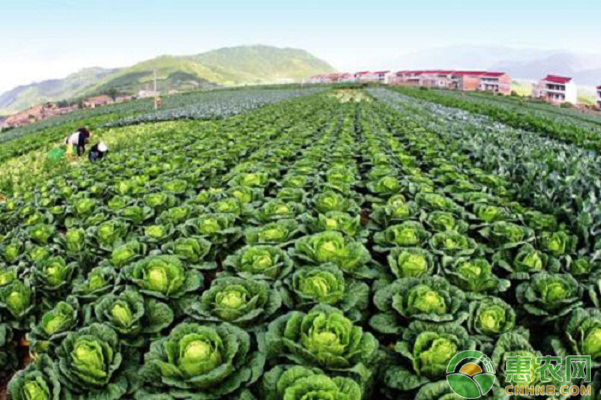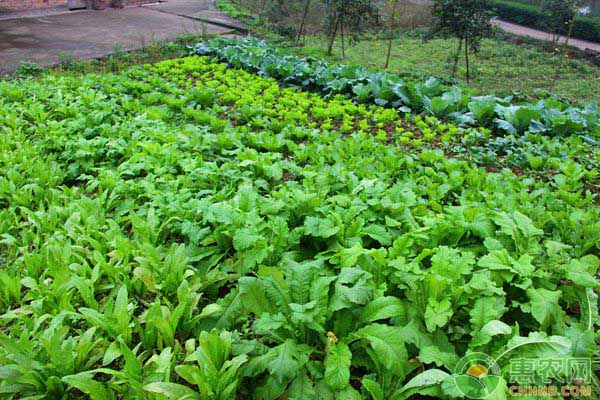Cultivation techniques of summer vegetables sheltering from rain and shading in northern areas
Summer has the characteristics of high temperature and frequent rainstorms, so it has adverse effects on the growth management of vegetables. How to manage summer vegetables in the north? Let's take a look at the cultivation techniques of summer vegetables to shelter from rain and shade.

First, the varieties of vegetables cultivated in summer
There are many kinds of vegetables grown in summer, mainly cucumber, eggplant, pepper, celery, radish, etc. In order to improve the yield and quality of vegetables, vegetables can have good disease resistance and resistance during the growth and development process. Heat, we must make a strict choice in the varieties of summer vegetables. The vegetables cultivated in summer mainly choose varieties with disease resistance, heat resistance and moisture resistance. Combined with cover cultivation techniques and other pest control techniques, they can effectively improve the cultivation quality of summer vegetables and improve the economic benefits of vegetable cultivation.
Second, cover cultivation techniques
(1) Coverage method
It is necessary to use the full coverage mode to properly cover the shading net and the insect net according to its function. Choose a well-ventilated, well-drained soil location for building seedbeds, maintaining a large nutrient area, and improving nutrient conditions. Before covering, the skirt film of the winter greenhouse should be removed, and the insect net should be covered on the periphery, and the insect net can be buried in the soil and compacted to prevent the pests from invading the eggs. Cover the top of the greenhouse frame with a shade net to avoid rain and shade, reduce the direct sunlight and reduce the temperature inside the greenhouse.
(2) Advantages of covering cultivation techniques
Summer is a season with high rainfall and relatively concentrated, and the occurrence of heavy rain will affect the growth of vegetables, causing damage to vegetable seeds and seedlings, causing loss of fertilizer and soil, causing the roots of vegetables to be exposed and the soil to be knotted. The greenhouse constructed by the sunshade net and the insect net can effectively reduce the natural environment and weather of vegetables, reduce and prevent the mechanical damage and physiological damage caused by rainwater on vegetables, and help to reduce the falling and fruit drop, which is conducive to the growth of vegetable roots. It also blocks the sunlight and acts as a cooling factor to enable the smooth production and development of vegetables. It can adjust the microclimate inside the greenhouse, use the method of covering the shade net and the insect net to improve the temperature and humidity environment of vegetable growth and development, reduce the direct sunlight, avoid the low quality of the seedlings, prevent the invasion of pests and diseases, and block the vegetables and The contact between pests can effectively improve the quality and yield of vegetables, save planting costs and capital investment, facilitate field management, and achieve maximum economic benefits.

Third, summer vegetable cultivation techniques
(1) Full coverage
Before entering the summer, it is necessary to timely cover the shade net and the insect net on the greenhouse, which can realize the summer vegetable planting until the picking stage, effectively blocking the effect of adverse factors on the vegetables, blocking the damage of rainwater and sunlight on the vegetables, and reducing Invasion of pests and diseases, increasing vegetable yield and quality.
(2) Soil treatment
Before the greenhouse is covered, the soil in the greenhouse should be thoroughly and meticulously refurbished, and the residues in contact with the disease should be cleaned up in a concentrated manner or incinerated. Strengthen the cleaning of the shed, and after using the sunshade net and the insect net in the greenhouse, use the 48% lesbian emulsifiable oil 1000 times, according to the proportion of the soil in the shed, carry out a full spray in the shed, do not miss a detail in the shed The pests and residual viruses in the soil are cleaned, effectively cutting off the spread of pests and diseases, and creating a relatively safe vegetable growing area.
(3) Fertilizer application
Before the vegetable is planted, the application of fertilizer is carried out to improve the ability of the soil in the shed to store water and fertilizer, to create good soil conditions, and to meet the basic nutritional needs of vegetables. In the process of planting vegetables, combined with soil cultivation in the shed, the application of seed fertilizers is carried out to meet the demand for nutrients in vegetables during the critical period of nutrition, and the number of top dressings is minimized. According to the actual conditions of the vegetable growers and the state of vegetable cultivation, the irrigation method can be selected. When conditions permit, drip irrigation and micro sprinkler irrigation facilities can be constructed in the shed to avoid the invasion of pests caused by a large number of watering. The quality of the irrigation in the shed effectively improves the fertilizer efficiency, and also protects the soil structure in the shed and reduces the evaporation of water in the soil.
(4) Strengthening the management of the shed
To select good vegetable varieties that are resistant to disease and heat, properly adjust the cultivation of vegetables, remove the leaves of vegetables close to the insect nets on the side of the greenhouse, and regularly check the vegetables in the greenhouse and the pests and eggs on the field and insect nets. Use artificial removal to avoid pests and eggs. Strengthen the management of the shading net and the insect net. In the case of damage to the shading net and the insect net, it is necessary to repair and cover the omentum in time. When the weather enters a high temperature period, artificial cooling methods such as irrigation should be carried out in the shed to effectively adjust the temperature in the shed, and the humidity in the shed can be improved mainly by drip irrigation, which not only improves the quality of irrigation but also reduces the occurrence of diseases. And spread. Proper ventilation should be carried out to ensure proper temperature in the greenhouse, and the ventilation time should be appropriately extended as the summer temperature gradually increases.

Fourth, other techniques for the prevention and control of vegetable diseases and insect pests in summer
(1) Beans and vegetables pests and diseases
In order to effectively avoid the infestation of vegetables by the bean curd, the pyrethroid pesticide can be used to prevent and control the legumes in the stage of flowering. For the bean rust, it is necessary to burn or clean the diseased bodies in the field to ensure the cleanness of the planting soil. When controlling powdery mildew, the vegetables can be ventilated and cooled, and the amount of phosphorus and potassium fertilizer can be increased. The disease resistance of legumes.
(2) Fruits, vegetables and pests
The main pest of melons and vegetables is melon, and the infestation of melons often begins in the summer of June and July, and enters the most dangerous period in August and September. In order to prevent the melon from squatting in the vine, it is necessary to remove the leaf of the vegetable during the initial stage of the larva. In addition to using insect nets and manual removal, matrine can be applied at a dose of 60-100 ml per acre of field, which can effectively control melon. After picking the melons and fruits, the cleaning of the fields can be strengthened, and the fruits and fruits can be incinerated and cleaned in time after harvesting.
(3) Solanum fruit vegetables and pests
The insect pests of solanaceous vegetables mainly include sassafras, aphids, beet armyworms, and thrips, and the most common diseases are anthracnose, powdery mildew and bacterial wilt. For the high incidence of a variety of pests and diseases, it is necessary to improve the application of basic fertilizers, and on the basis of the base fertilizer, the application of decomposed organic fertilizer. Strengthen the cleaning of drainage ditch, adjust the humidity of vegetable planting fields, clean the soil regularly, and timely treat the diseased vegetables.
Guangzhou Zhongzhinan Supply Chain Co.,Ltd. , https://www.gzzhongzhinan.com